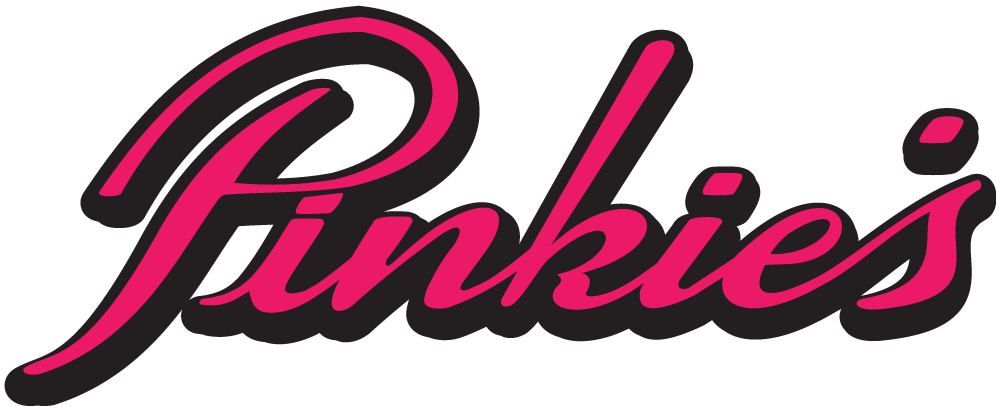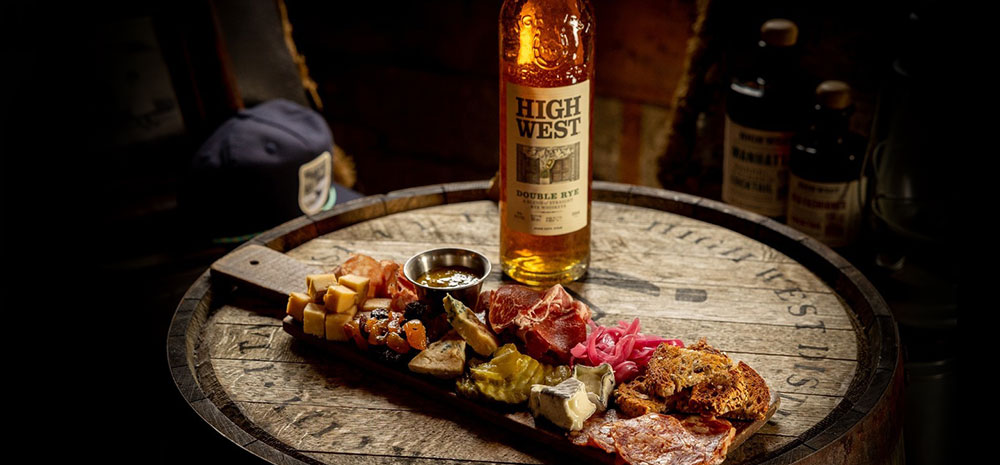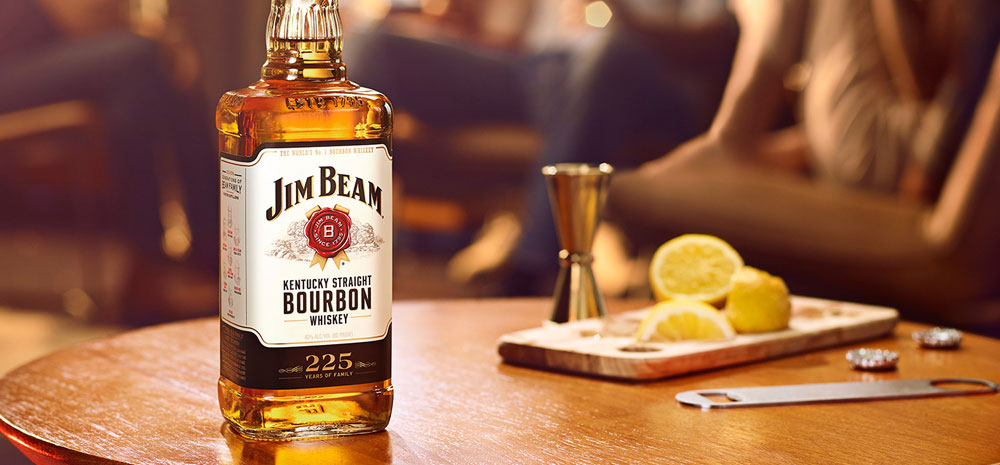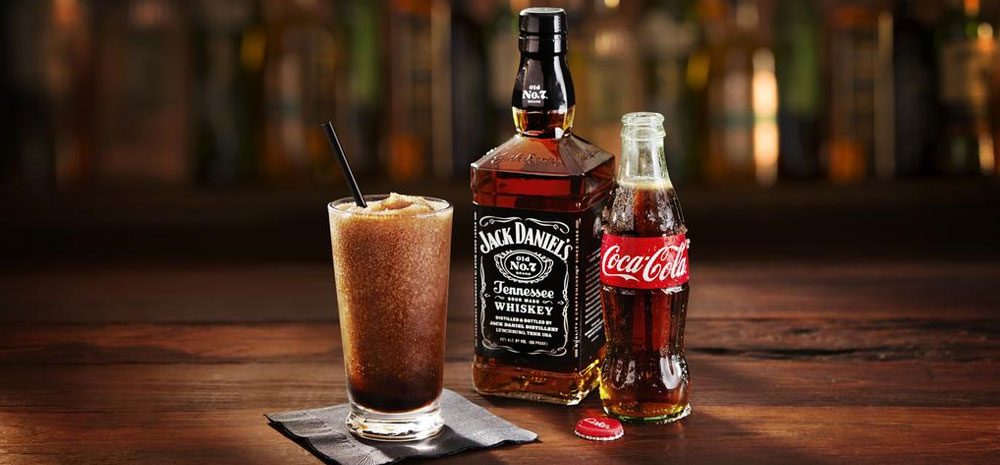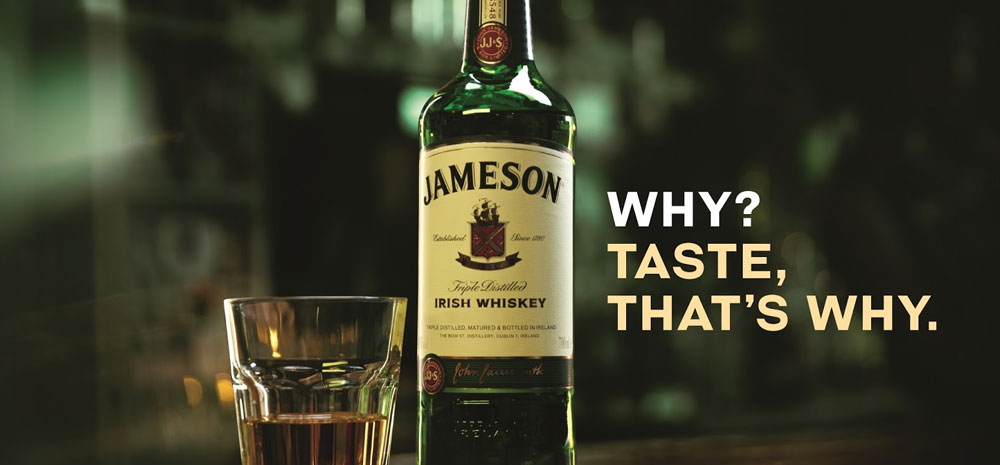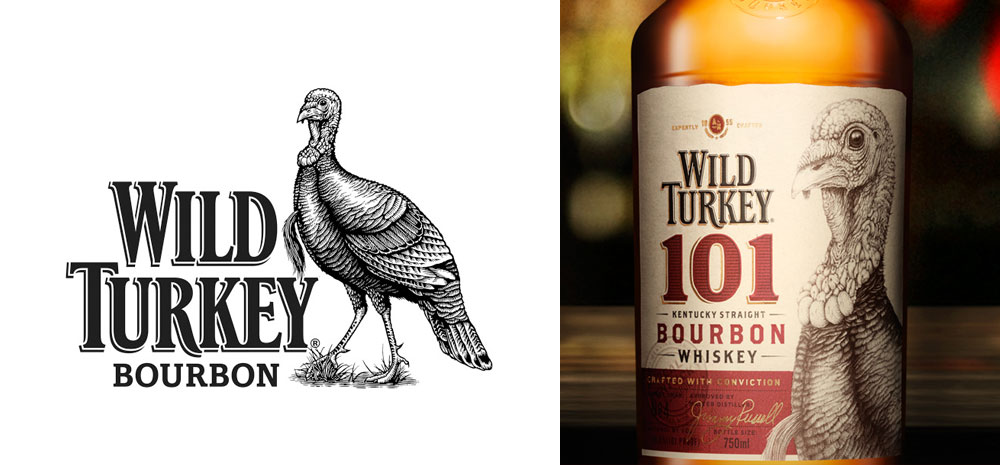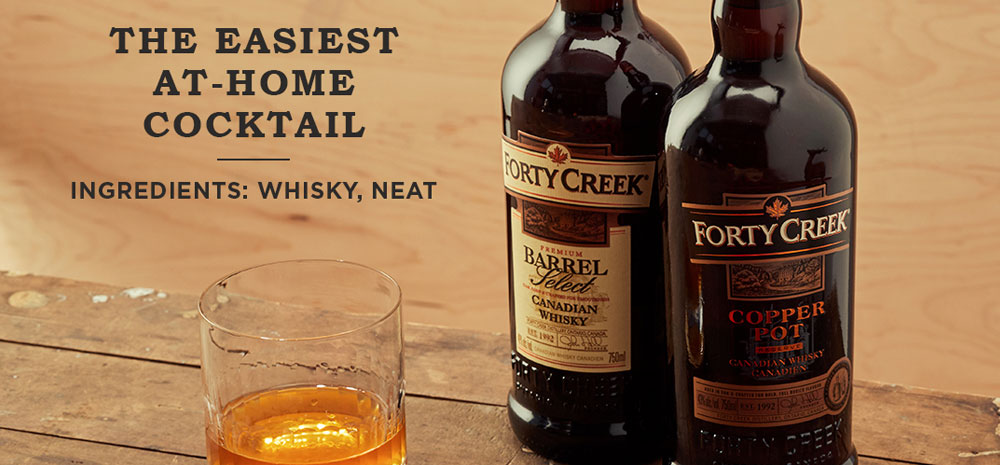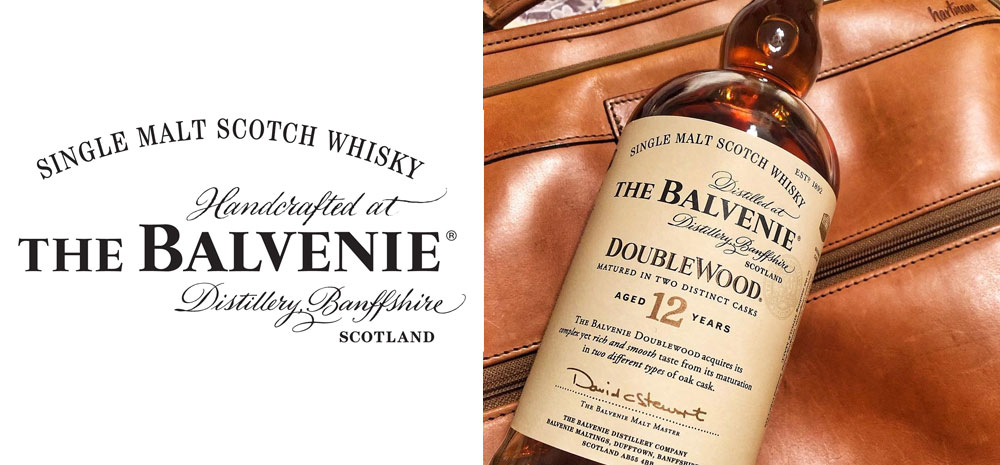WHISKEY
Whiskey covers an enormous span of spirits, ranging from bourbon to scotch and from Japan to the U.S.
Whisky or whiskey is a type of distilled alcoholic beverage made from fermented grain mash. Various grains (which may be malted) are used for different varieties, including barley, corn, rye, and wheat. Whisky is typically aged in wooden casks, generally made of charred white oak. Whisky is a strictly regulated spirit worldwide with many classes and types.
WHISKEY History / Production
Since the dawn of civilization, distilled spirits have been known to mankind as the “water of life.” In every clime, in every corner of the the world, people have been enjoying spirits distilled from the grains and fruits growing around them. The modern process of distillation can be traced to the Arabs, it is the Celtic peoples of the British Isles to whom we are indebted for the origins of one type of spirit – whiskey. The Celtic ancestors of modern Scotch and Irish called their drink distilled from grain “usigebaugh” (pronounced wis-ge-baugh) – water of life. The English shortened this to “whisky (spelled without the “e.” The Irish, and Americans, of course, spell it with the “e”). A simple definition, one that’s short and to the point is that whiskey is a spirit, aged in wood, obtained from the distillation of a fermented mash of grain. Whiskey can be produced from any grain, but corn, rye and barley are the principal grains used.
Many Types of Whiskey
American Blended is a balanced blending of straight whiskies and neutral spirits containing at least 20% straight whiskey and bottled at not less than 80 proof. “Neutral Spirits” are distilled spirits at or above 190 proof.
In producing a blended whiskey, the distiller combines several straight whiskies with extremely light bodied, almost flavorless spirits (neutral grain spirits) and sometimes the distiller adds a blending agent such as sherry. The result is a balanced whiskey that is exceptionally uniform in lightness and flavor.
Blended whiskies are “built.” The straight whiskies that go into them are distilled and aged to take a planned part in the blend. Every blend on a store’s shelves has a number of straight whiskies in its formula. The standard for any blend is the “fixed” character of taste and bouquet the distiller has chosen. The “taste quotient” can be maintained year after year. In order to maintain the taste pattern of the blend the distiller expertise comes out, because no two straight whiskies are exactly alike. They (straight whiskies) vary with each grain crop and they very slightly from batch to batch. In creating and maintaining the same blend year after year the blender/distiller must continually compensate for these changes if he is to have uniformity in his brand. Blended whiskies are not merely stirred, but are allowed to rest together for a considerable period of time, commonly known as the marrying period. For this final aging, the blend , in some instances, is restored to whiskey barrels. The product can be aged in either used oak barrels or in new uncharred oak barrels.
Bourbon has been distilled in the United States since the days of the American Revolution, it was not until May 4, 1964, that Congress recognized it as a “distinctive product of the United States.” Under federal regulations, bourbon is a whiskey distilled at not exceeding 160 proof from a fermented mash of not less that 51% corn. The balance of the mash may be any other grain but is generally rye and barley malt. Also the product must be stored in new charred oak barrels. Bourbon includes both straights and bonds. Factoid: Bourbon was first produced by a frontier preacher, Rev. Elijah Craig, who distilled the whiskey in what was then the western part of Virginia, later to be part of the new state of Kentucky. The immediate area was named Bourbon County and the whiskey became known as Bourbon whiskey.
Bonded whiskey is not blended. It has been stored continuously for at least four years in wooden barrels and which is bottled at 100 proof ; it must all be the product of a single distillery, by the same distiller, during a single season and year. It is then entitled to be labeled as “bottled in bond” and sealed with the U.S. government’s green strip stamp.
Bottled in bond whiskey must be bottled under supervision of the U.S. government within the distillery in a bottling-in-bond department specially constructed according to federal specifications which provides accommodations for inspectors of the Internal Revenue Service.
Under federal regulations, the distiller, if so chooses, is allowed to bottle this whiskey without paying the excise tax, provided he keeps the bottled product in a bonded warehouse until ready to be moved into the distribution channels. When the bottled in bond whiskey is removed, it the tax-paid by the owner. The term bottled in bond is not a guarantee of quality but refers only to the regulatory procedure under which it is bottled and taxed.
Canadian Whisky is a distinctive product of Canada, in which corn and rye are the principal grains used in the mash. Being a people primarily of British and French origin, it is only logical that Canadians combine the traditions of the Scotch Highlands and the French Cognac region in their whisky production skills. Canadians contain no distilled spirits less than two years old, they are a whisky of delicate flavor and light body. The distillers may blend their whiskies either before aging or during the aging period. Most Canadians exported to the United States are blends. U.S. regulations do not permit the labeling of Canadian whiskies as straights. No limitations on grain formulas, proof of distillation or cooperage.
Canadian blends are not a blend of straight whiskies and neutral spirits as they are in the United States. The lightest spirits, distilled at 185 proof, would be legally defined as whiskey ( rather than neutral spirits) in the U.S.
They are generally bottled at six years of age or more. A Canadian that is under four years of age must state its age on the label. Aging is done typically in wooden casks or barrels which may be charred on the inside
Corn whiskey is distilled from a fermented mash of grain containing at least 80% corn, and is designated a straight corn whiskey. It can be stored in either uncharred barrels or re-used charred barrels. Corn whiskey is a fiery drink of the backwoods that gets little chance to mature at all. Closest thing to “White Lightning.”
Grain whisky is a whisky that is produced from malted and unmalted cereals in a continuous distillation process. A higher strength spirit the matures more quickly than that of malt whiskey.
Irish whisky is a product of Ireland that is actually two kinds of whiskey, one produced in Northern Ireland and the other in the Republic of Ireland. Northern Ireland whisky is a blend of malt whiskies and grain whiskey. The malt whiskies are distilled in pot stills at about 111 proof from a mash of barley malt. The grain whiskey is distilled in continuous stills at over 180 proof.
The Republic of Ireland is a blended whiskey distilled at not more that 171 proof in pot stills. The difference is in the mash. The malted barley is mixed with wheat, oats and rye.
It is generally accepted that the Irish were the first people in Western Europe to make spirits. They are made from a mash of cereals, mostly barley with perhaps twenty percent of oat and wheat . Half of the barley is malted (see Scotch Whisky) and when all the cereals are mashed the starch in them is turned into sugar. The use of oats in the mash is a ancient practice, which so far is only used by the Irish. The oats are “cracked” rather than ground before being added to the mash. Note that unlike scotch whisky, whose ingredients and methods of manufacture it generally follows, the barley malt in Irish whiskey is not impregnated with smokey flavor from burning peat.
The distilling of the femented mash, or “wash” as it is technically called, is very much the same in Ireland as it is in Scotland. Pot stills are used exclusively for the straight whiskies. Irish whiskies are distilled at a higher proof than scotch malts, making them somewhat lighter. No Irish whiskey is aged less than three years and it is the only whiskey in the world that is distilled three times. An exceptionally smooth, uniquely light flavored whiskey.
Japanese whisky is a style of whisky developed and produced in Japan. Whisky production in Japan began around 1870, but the first commercial production was in 1924 upon the opening of the country’s first distillery, Yamazaki. Broadly speaking the style of Japanese whisky is more similar to that of Scotch whisky than other major styles of whisky.
Rye whiskey is a product that is not distilled more than 160 proof from a fermented mash of grain containing at least 51% rye grain. Also a straight rye in the United States must be bottled at not less than 80 proof , and be aged in new charred oak barrels for not less than two years.
Sour Mash whiskey is a type of whiskey which is produced as a result of using part of the previous day’s mash instead of water to start and to assist in the fermentation of a new batch of mash. A definition of “mash” is a mixture of grain, molasses or sugar with water and yeast, which is fermented and distilled to produce ethyl alcohol. There is nothing “sour” about Sour Mash Whiskey. Some good judges of Bourbon feel that this particular type has the most pleasing of all Bourbon flavors.
Straight whiskey is an alcoholic distillate from a fermented mash of grain distilled at not exceeding 160 proof and with drawn from the cistern room of the distillery at not more than 110 proof and not less than 80 proof, and aged for not less than 24 calendar months in new charred oak barrels. Straight whiskey can be distilled from any grain or combination of grains. There are several types of straight whiskies in the United States.
Scotch whisky often referred to simply as “Scotch,” is a globally renowned distilled alcoholic beverage produced exclusively in Scotland. It’s a spirit with a rich history dating back to the 15th century, with the earliest recorded instance appearing in 1494. The name “whisky” itself derives from the Gaelic phrase “uisge beatha” or “usquebaugh”, meaning “water of life”.
Tennessee whiskey production process follows that of bourbon, but it differs in the extra steps that take place immediately after distilling. At that point the whiskey is seeped very slowly through vats packed with charcoal. Charcoal is very important, its use eliminates congeners before aging. Congeners are the natural flavor constituents in spirits. They are traces of oils, esters and acids carried through the distillation process and into the distillate. Spirits distilled at lower proofs have the highest congeneric content. High proof neutral spirits are practically free of congeners. The charcoal used in the production of Tennessee whiskey comes from the Tennessee hard maple tree.
When the whiskey comes off the still, it is slowly introduced into vats where it is permitted to seep down uniformly through the entire area of the charcoal. In about ten days, the first drops of whiskey trickle out, and continue in this drop by drop fashion until the leaching vat is emptied. Following the leaching process, the whiskey is put into charred, white oak barrels for storage and aging.
Vatted Malt scotch is a scotch produced by marrying together various malt whiskies from several distilleries. They are generally labeled “Scotch Malt Whisky” or “Pure Malt”. Vatted malts cannot be labeled as a single malt.
